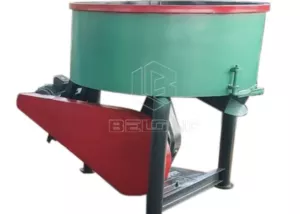The necessity of the mixer: In the basic process of producing Charcoal Briquettes, a mixer is an indispensable equipment. Because the formation of Charcoal Briquettes requires certain conditions for the raw materials. After carbonization and crushing of raw materials, a certain amount of water and binder need to be added to make the charcoal powder easier to form. The more thoroughly the charcoal powder is mixed with water and binder, the higher the quality of the charcoal briquettes.
Characteristics of the mixer: Referring to the ancient stone mill, the wheel mill mixer is a type of machine that combines the latest characteristics of modern machinery and the needs of actual mixing operations, designed to combine wheel rolling and mixing.
Applicability: The roller mixer can be used for bulk mixing operations in industries such as charcoal powder, bamboo charcoal powder, semi-coke charcoal, coal powder, chemical industry, and construction.
Impact on finished products: The roller mixer has a reasonable structure, is sturdy and durable, and the surface of the finished product is smooth and free of explosion marks. The materials stirred by ordinary mixers only appear uniform, but in reality, they are only surface phenomena. The materials are still not fully mixed together, which affects efficiency and the smoothness of the finished product. Especially before making coal and charcoal briquettes, the materials must be repeatedly crushed and dispersed using a wheel mill mixer. After such a stirring process, the material produced can only be uniform.
Working Principle: A wheel mill mixer is a coarse grinding machine that uses the gravity of the rollers to crush and grind materials. The crushing mechanism consists of rollers and grinding discs. When the wheel mill mixer is in operation, the material is fed into the middle of the grinding disc and enters the lower part of the roller under the thrust of the scraper or its own centrifugal force. After being subjected to multiple rounds of rolling, particles that meet the particle size requirements leak out from the sieve holes around the grinding disc, while coarse particles return to the roller for further rolling.

